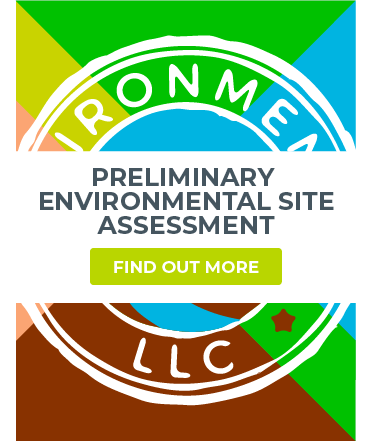Before we get too deep, you should check out this post describing what a Phase 1 Environmental Site Assessment. It will give you a good base of understanding about PESA’s.
Who Needs a Preliminary Environmental Site Assessment?
Governments; State Departments of Transportation, Counties and Municipalities typically purchase PESA’s. Governments who are putting in infrastructure like roads and water mains need to understand the environmental conditions around the area they are working in. These road and pipeline projects are linear in nature and cross the Rights of Way of many other land owners. Whereas a Phase 1 ESA typically covers a property owner inside a particular set of parcels, a PESA covers all the land owners along the project corridor. A good example of this would be a road widening along a state highway which passes several dry cleaners, gas stations and industrial parks. Any one of the nearby land uses could contaminate the ROW.
Why Do Governments Purchase Preliminary Environmental Site Assessments?
Governments are interested in the contamination along the corridor for several reasons.
- They are concerned with contamination for worker exposure. Construction workers potentially exposed to contamination is a health and safety risk and precautions may be required for the workers.
- They need to budget for the project. Contaminated soil is expensive to haul off-site, Clean Construction Demolition Debris (CCDD) soil is less expensive to haul off but must be clean. Soil can be reused on-site but must be clean, so there could be costs associated with bringing in backfill.
- Contamination travels along infrastructure such as pipelines. Putting a pipeline through a contaminated area is almost certainly going to transmit the contamination along the pipe, spreading it to adjacent properties.
How Long Does It Take to Do a Preliminary Environmental Site Assessment?
The time to do a PESA is dependent on the area covered. A PESA can cover miles of roadway or pipeline. If the area is relatively small, expect it to take the same amount of time as a Phase 1 ESA, about 10 to 15 days.
What Does a Preliminary Environmental Site Assessment Cost?
Again, this depends on the size of the corridor which is being studied but figure about $2000 to start.
How Long is a Preliminary Environmental Site Assessment Good For?
A PESA is typically used once and done. They aren’t referred back to for financing like a Phase 1 ESA.
Who Performs a Preliminary Environmental Site Assessment?
The majority of PESAs are completed internally by the requesting government agency. They are rarely completed by consultants; however, municipalities typically don’t complete them internally and will request the assistance of a consultant. A3 Environmental Consultants does PESA’s in all 50 States. We are headquartered in Chicago Illinois but perform Phase 1 ESAs across the country at a rate of about 50 a month. We can also be a second set of eyes on the report to make sure it’s all correct.
Is A Site Visit Required for a Preliminary Environmental Site Assessment?
Yes, absolutely. As with the ASTM standard Phase 1 ESA (E1527-13), a site visit is required.
What Happens If There Are Recognized Environmental Concerns (REC) Identified In My PESA?
First off, they aren’t called Recognized Environmental Concerns (REC) in the context of a PESA. Concerns are classified as No Concern, Low, Medium or High Risk. High risk would indicate that a Preliminary Site Investigation (PSI) which is the equivalent of a Phase 2 ESA.
What Else Do I Need To Know about Preliminary Environmental Site Assessments?
- In the State of Illinois, the Department of Transportation subs the PESA process out to the Illinois State Geological Survey.
- If you are having a PESA performed as a government, the work is public record and can be subject to FOIA.
- If you’d like to see a sample Preliminary Environmental Site Assessment, click here.







































